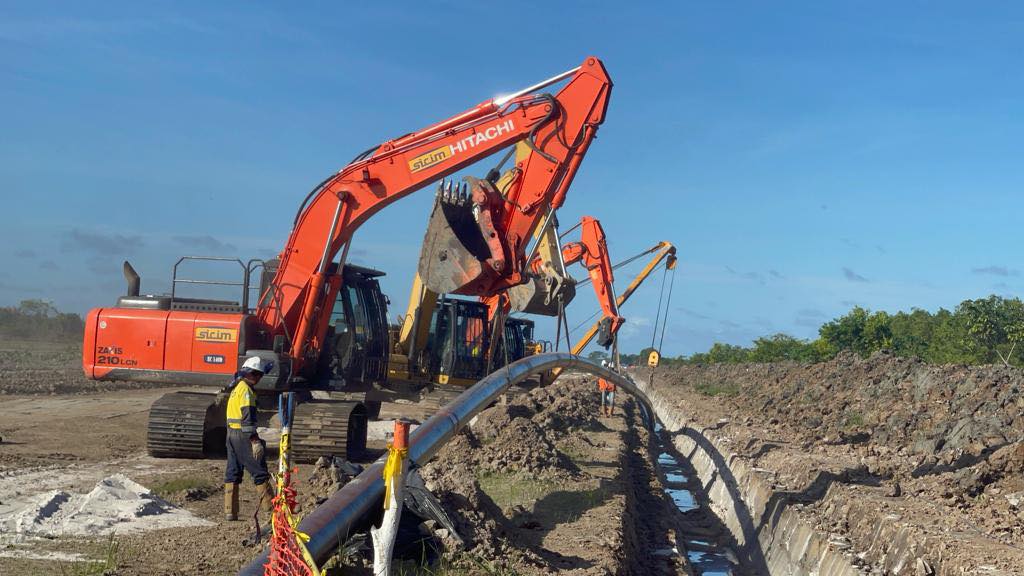Pipeline installation for Guyana’s Gas-to-Energy (GtE) project has significantly progressed, according to new updates provided by ExxonMobil Guyana on Feb. 6.
By the end of the year, Exxon is expected to be ready to bring gas onshore.
The company is responsible for the construction and installation of the 12” pipeline meant to transport 50 million cubic feet of gas per day to onshore facilities.
Currently, installation of the pipeline onshore is at 40% completion, ExxonMobil Guyana President, Alistair Routledge, said.
“So, that is the laying out of the pipes – we call that stringing – the welding of it, then lifting it into the trenches and burying it underground with all of the safety features that we add to that,” Routledge told reporters.
With offshore installation, Exxon is at 55% completion.
Pipeline installation kicked off last year. Routledge said it was executed in two parts.
New national control centre being constructed to support Guyana’s gas project | OilNOW
“We had what we call the ultra-shallow piece, which are mud flaps at low tide. We did about 18 kilometers. So, we executed a good portion of that…then we installed in the shallow water…going from that 18-kilometer mark out to where the shelf drops down into the deep water,” he explained.
Exxon also completed “horizontal drilling” where the pipeline passes under the sea wall on the West Bank of Demerara. Routledge said what lies ahead is to install risers on the Liza Destiny and Liza Unity vessels and start deep water pipelaying, then connecting to the power plant.
The Liza field production will be taken offline in the second half of the year to facilitate this.
This year, construction on the GtE integrated facility including a 300-megawatt (MW) power plant is expected to commence. The Guyana government contracted a US-based group (CH4-Lindsayca) to build the facility at Wales, West Bank Demerara, for US$759 million.
The project aims to establish infrastructure for transporting natural gas from the offshore Liza oilfield to Wales. It is expected to deliver gas to the government for power generation and other forms of commercialization. The government plans to cut the cost of electricity to consumers by 50% once the plant starts running, switching out heavy fuel oil (HFO) for the less-polluting natural gas.



